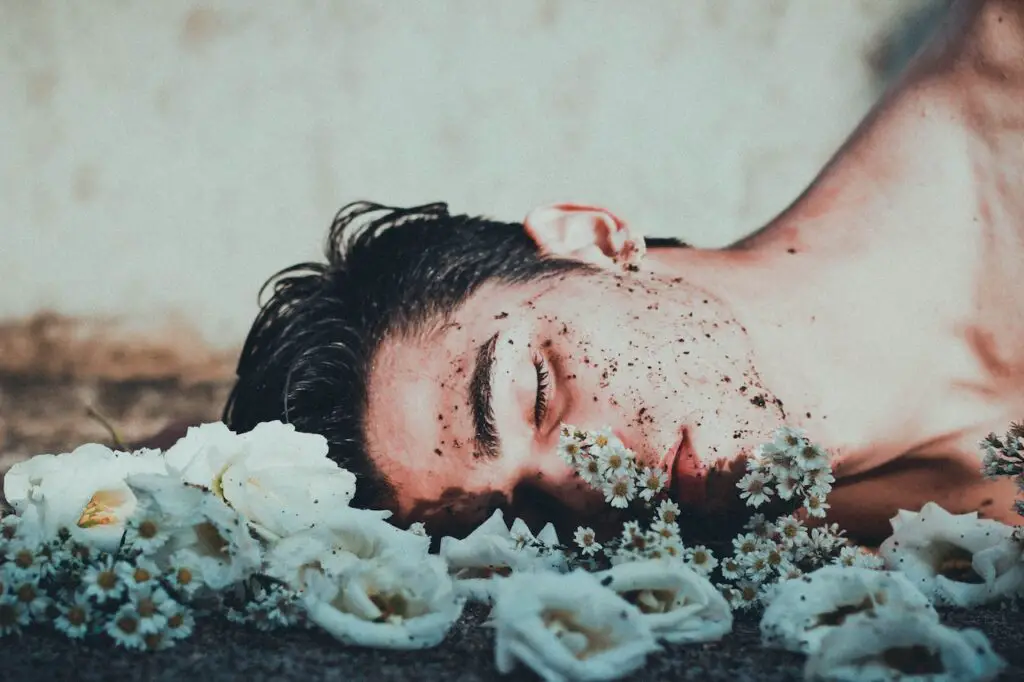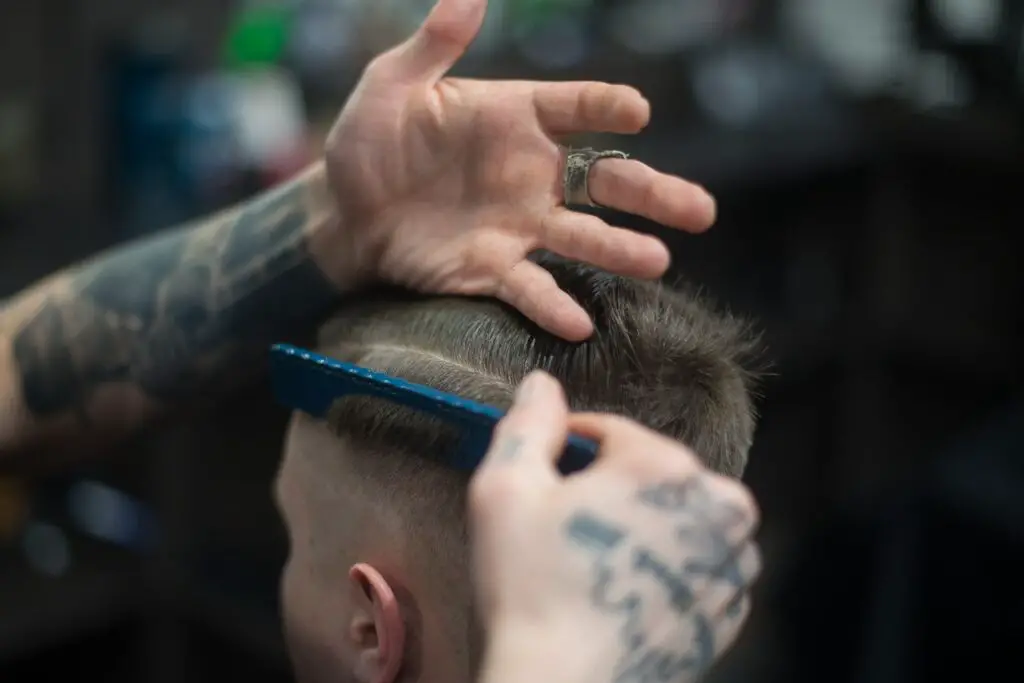Having perfectly textured hair is a goal that many men strive to achieve. The right texture can enhance your overall appearance and boost your confidence. However, achieving the perfect texture requires proper grooming and maintenance. In this article, we will discuss some effective tips and tricks to help you get the perfectly textured hair you desire.
Understanding Hair Types
Before diving into the various grooming tips and tricks, it’s essential to have a thorough understanding of different hair types. Hair can be categorized into several types, each with its own unique characteristics and requirements for care and styling. By identifying your specific hair type, you can tailor your grooming routine to suit its needs and achieve the best results.
Straight Hair
Straight hair is characterized by its smooth and sleek texture. It tends to be naturally shiny and lacks significant curls or waves. Straight hair is often more prone to oiliness, as the natural oils can easily travel down the hair shaft.
Wavy Hair
Wavy hair falls between straight and curly hair. It has gentle waves that add texture and volume to the hair. Wavy hair can range from loose, subtle waves to more defined and pronounced waves. It often benefits from products that enhance and define the waves.
Curly Hair
Curly hair is known for its spiral or ringlet-shaped strands. It has a naturally textured and voluminous appearance. Curly hair tends to be more prone to dryness and frizz, as the natural oils have difficulty reaching the ends of the hair strands. Moisturizing and defining products are crucial for maintaining and enhancing the curl pattern.
Kinky Hair
Kinky hair, also referred to as tightly coiled or afro-textured hair, has a tightly coiled pattern. It is often dense and has a high shrinkage factor. Kinky hair requires extra moisture and careful handling to prevent breakage and maintain its shape and texture.
Related: Unlocking the Secrets: 10 Trendy Hairstyles for Men to Rock Short Hair

Choosing the Right Hair Products
Selecting the right hair products is essential for achieving the perfect texture and maintaining the health of your hair. With a wide array of options available, it’s important to understand your hair type and specific needs to make informed choices. Here are some factors to consider when choosing hair products:
Hair Type
Consider whether your hair is straight, wavy, curly, or kinky. Different hair types have varying needs, and using products specifically formulated for your hair type will yield better results.
Moisture and Hydration
Assess the moisture needs of your hair. If your hair tends to be dry, opt for moisturizing shampoos and conditioners that provide hydration and nourishment. If your hair leans towards oiliness, look for lightweight, oil-free formulations.
Ingredients
Read the ingredient labels and avoid products that contain harsh sulfates, parabens, and alcohol. Look for natural ingredients such as aloe vera, coconut oil, shea butter, and argan oil, which can provide nourishment and promote hair health.
Styling Products
Choose styling products that align with your desired texture and hairstyle. Pomades, waxes, or gels can help create definition and hold, while texturizing sprays or sea salt sprays add volume and enhance natural texture.
Brand Reputation and Reviews
Research different brands and read reviews to gauge their effectiveness and suitability for your hair type. Consider recommendations from trusted sources or consult with a hair care professional for personalized advice.
Washing and Conditioning
Proper washing and conditioning are fundamental to maintain healthy hair and promote texture. Use lukewarm water and a gentle shampoo to cleanse your hair. Massage your scalp to stimulate blood circulation and remove any product buildup. Follow up with a suitable conditioner to moisturize and detangle your hair. Rinse thoroughly to prevent residue accumulation.
Towel Drying Techniques
The way you dry your hair can significantly impact its texture. Instead of vigorously rubbing your hair with a towel, opt for a gentle patting motion to remove excess water. Avoid using rough towels that can cause friction and lead to frizz. Consider using a microfiber towel or an old t-shirt to minimize damage and maintain the natural texture of your hair.
Applying Styling Products
To achieve the desired texture and hold, apply styling products to damp hair for better absorption. Start with a small amount and gradually add more if needed. Ensure even distribution from roots to ends, focusing on the roots for added volume and the ends to prevent frizz. Experiment with different techniques such as scrunching or twisting to enhance curls or waves. Avoid the scalp to prevent product buildup. By following these tips, you can achieve the perfect texture while maintaining natural movement in your hair.
Related: How to Choose the Right Beard Style for Your Face Shape

Blow Drying Techniques
To achieve the perfect texture while blow drying, start with damp hair and apply a heat protectant. Section your hair into manageable sections for even drying. Use a round brush to lift the roots and create volume while directing the airflow downwards. Move the dryer and brush simultaneously, following the brush’s path to smooth and shape the hair. For added texture, twist small sections of hair around your fingers while blow drying. Finish with a blast of cool air to set the style and enhance shine. By mastering these blow drying techniques, you can achieve the desired texture and create a polished, salon-worthy look.
Using Heat Styling Tools
When using heat styling tools, it’s essential to protect your hair from damage. Apply a heat protectant spray or serum to create a barrier between your hair and the heat. Adjust the temperature setting based on your hair type: lower heat for fine or damaged hair, and higher heat for thicker or coarser hair.
Divide your hair into sections and work on one section at a time to ensure even styling. Use a comb or brush to guide the tool through your hair, keeping it moving to prevent heat damage. Limit the frequency of heat styling to prevent excessive damage and always allow your hair to cool down before restyling or applying additional heat. By following these tips, you can enjoy the benefits of heat styling tools while minimizing the risk of hair damage.
Getting Regular Haircuts
Regular haircuts are essential for maintaining the texture and shape of your hair. Schedule appointments with a trusted hairstylist or barber to trim your hair and remove split ends. By keeping your hair well-maintained, you’ll prevent it from looking dull and lifeless. Discuss your desired texture and style with your stylist to ensure they understand your preferences.
Related: How to Get the Perfect Tapered Haircut: Men’s Grooming Tips and Tricks
Protecting Your Hair from Damage
Protecting your hair from external damage is crucial for maintaining texture. Limit exposure to harsh sunlight, chlorinated water, and excessive humidity, as they can cause dryness and frizz. Consider wearing a hat or using hair products with UV protection when spending extended periods outdoors. Additionally, avoid over-brushing your hair, as it can lead to breakage and damage.

Styling Tips for Different Hair Lengths
No matter the length of your hair, there are various styling techniques that can help you achieve the perfect texture. Here are some tips for styling different hair lengths:
Short Hair
For short hair, consider using texturizing products like pomades or waxes to create definition and enhance texture. Experiment with different styling techniques such as tousling, spiking, or slicking back for a variety of looks.
Medium-Length Hair
With medium-length hair, try incorporating braids, twists, or updos to add texture and interest. Use a curling iron or wand to create loose waves or curls for a romantic or playful look.
Long Hair
Long hair offers versatility for various styling options. Experiment with different hairstyles such as updos, braids, ponytails, or half-up half-down styles. Use hot tools like curling irons or straighteners to create curls, waves, or sleek, straight styles.
Layered Hair
If you have layered hair, take advantage of the natural texture and movement it provides. Use styling products like sea salt sprays or mousses to enhance the layers and create a tousled, beachy look.
Pixie Cut
For those with a pixie cut, play with different styling techniques to add texture and volume. Use a lightweight mousse or styling cream to create a piecey, textured look or use a flat iron to add sleekness and definition.
Embracing Natural Texture
Instead of constantly trying to alter your hair texture, embrace your natural hair. Work with your hair’s natural tendencies and find hairstyles that enhance its unique qualities. Embracing your natural texture can save you time, reduce damage, and create a more effortless and authentic look.
Related: Unlocking the Secrets: 10 Trendy Hairstyles for Men to Rock Short Hair
Maintaining Hair Health
Healthy hair is the foundation for achieving the perfect texture. Maintain a proper hair care routine by regularly washing, conditioning, and moisturizing your hair. Avoid excessive heat styling, chemical treatments, and harsh products that can damage your hair. Hydrate yourself, eat a balanced diet, and consider taking supplements that promote hair health.
Incorporating a Healthy Diet
A healthy diet plays a significant role in maintaining good hair texture. Ensure you’re getting a balanced intake of vitamins, minerals, and essential fatty acids. Foods rich in omega-3 fatty acids, such as fish, nuts, and seeds, can promote hair health. Additionally, consume plenty of fruits, vegetables, and lean proteins to nourish your hair from within.
Overcoming Common Hair Problems
Hair problems can be frustrating, but with the right approach, they can be managed effectively. Here are some tips for overcoming common hair problems:
Dandruff
Use anti-dandruff shampoos containing ingredients like zinc pyrithione or ketoconazole. Avoid excessive scratching and keep your scalp clean and moisturized.
Dry Scalp
Massage your scalp with natural oils like coconut oil or tea tree oil to nourish and hydrate it. Use gentle, moisturizing shampoos and conditioners formulated for dry scalps.
Hair Loss
Identify the underlying cause of hair loss, such as stress, hormonal imbalances, or nutritional deficiencies. Consult a dermatologist for a proper diagnosis and consider treatments like minoxidil or dietary changes.
Frizz
Use moisturizing and anti-frizz hair products like serums or leave-in conditioners. Limit heat styling and opt for air-drying or diffusing methods. Sleep on a satin pillowcase to reduce friction.
Split Ends
Trim your hair regularly to remove split ends and prevent further damage. Use protective hairstyles, avoid excessive heat, and use serums or oils to keep your hair moisturized.
Greasy Hair
Wash your hair regularly with a clarifying shampoo to remove excess oil. Avoid over-brushing and use lightweight, volumizing products. Be mindful of your diet and avoid greasy foods.
Conclusion
Achieving the perfect texture for your hair requires a combination of proper grooming, suitable products, and healthy practices. Understand your hair type, choose the right products, and follow a consistent hair care routine. Embrace your natural texture, experiment with different styles, and prioritize hair health. With these tips and tricks, you’ll be well on your way to getting the perfectly textured hair you desire.
FAQs (Frequently Asked Questions)
Is it possible to change my hair texture permanently?
While you can temporarily change your hair texture with styling techniques and products, it’s not possible to permanently alter your natural hair texture.
Can I achieve textured hair even if I have straight hair?
Yes, even individuals with straight hair can achieve textured looks through the use of styling products, heat tools, and specific techniques like braiding or twisting.
How often should I wash my hair to maintain its texture?
The frequency of hair washing depends on various factors, including your hair type, scalp condition, and lifestyle. Generally, washing your hair every 2-3 days can help maintain texture and prevent excessive dryness.
Are there any natural remedies to enhance hair texture?
Some natural remedies, such as using aloe vera gel, coconut oil, or apple cider vinegar rinses, can help improve hair texture. However, results may vary, and it’s important to patch test and use them in moderation.
Can using too many styling products damage my hair texture?
Using an excessive amount of styling products or using them too frequently can lead to product buildup and weigh down your hair. It’s important to strike a balance and use products in moderation.

